
Pop quiz, hotshot. Intruders have breached the hull and planted more than 20 bombs on your ship. Your elite Bomb Defusal Team has just 10 minutes to neutralize the threat. What do you do? WHAT DO YOU DO?
Summary
In the game, Fuse, you are part of the Bomb Defusal Team (BDT) and your group has been tasked with defusing a number of bombs placed by intruders throughout your ship. You will have to work together quickly and you will have to work together well because if you don’t defuse them all within 10 minutes, your ship will explode and all will be lost. But no pressure, right?
The game is for 1-5 players, aged 13 and up, and plays in no more than 10 minutes.
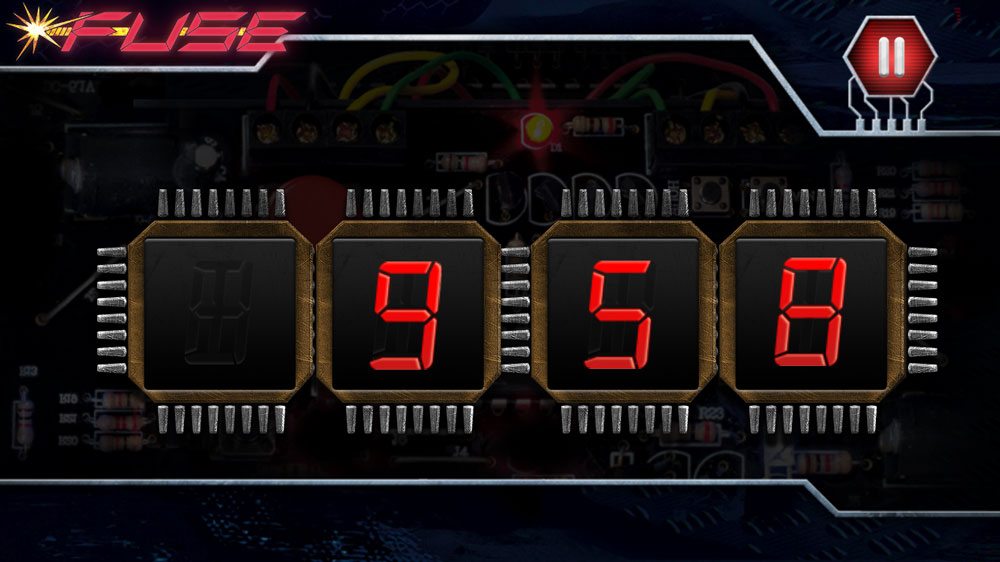
Components
In the nicely-sized (read: not completely oversized) box, you’ll find just a handful of components. There are 76 cards in the box, 54 Bomb cards and 22 Fuse cards, of average quality. There is also a dice bag and 25 nicely made custom D6s in five different colors. Finally, there’s a rule book, which also instructs you to download a free timer app for the game. (If you don’t have access to a smart phone, any 10-minute timer will do.)
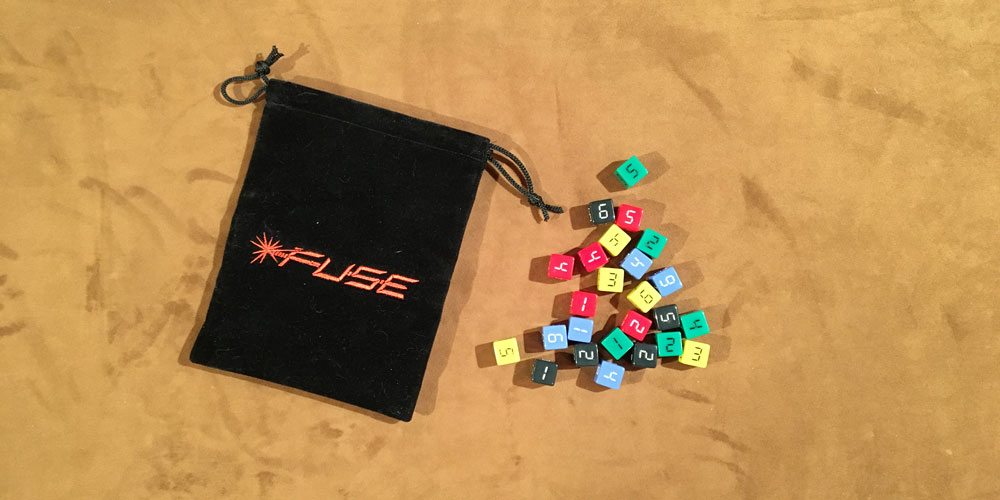
Setup and Gameplay
The first task is separating the Bomb cards from the Fuse cards. If this is your first game or you want an easier experience, remove the Bomb cards with a value of “6” on them. These are pretty tough for beginners.
Shuffle the Bomb cards and deal two to each player. Make sure each player has Bomb cards of differing values, that is, if a player has a “3” or “4”, make sure the second card is a “1” or “2.” These cards should be placed face up in front of the players.
Next, consult the rule book’s table. Depending on the number of players and the desired difficulty, count out that number of Bomb cards. From this newly made deck, deal five Bomb cards face up and then mix six random Fuse cards into your deck. Put all the dice in the bag, fire up the app, wipe off your palms, take a deep breath, and you’re ready to play.

Actually, not quite.
Fuse is so fast-paced, it’s best that all players have a good understanding of the rules and the Bomb cards before beginning. Trying to answer questions during gameplay will mean losing precious seconds and could mean the difference between winning and losing.
The rules are pretty straightforward and we’ll get to those in a second. But the Bomb cards can be a challenge for first-timers. Bomb cards are made up of simple icons and they are really quite easy to figure out, but when the timer starts and the frenzy begins, sometimes synapses short-circuit.
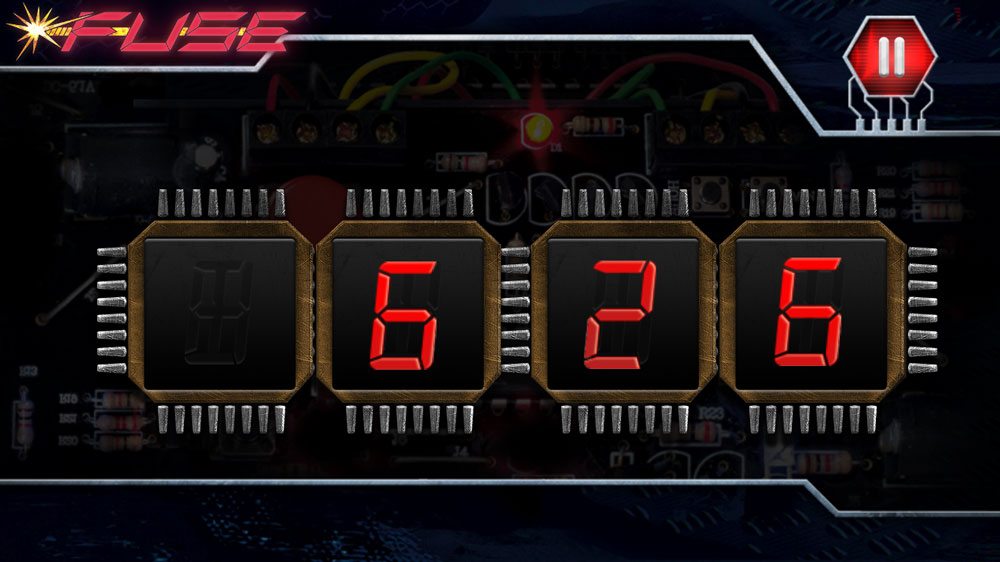
The Bomb cards have a number of elements on them and the most recognizable piece is the point value, located in the upper right corner of the card. Lower values are easier to complete and can be as simple as collecting two dice that, when you subtract one from the other, have a difference of 2. Dice are placed on the cards, directly on the icons, to complete the challenges, with two exceptions.
Some cards have a number of smaller icons and a long arrow. These cards require the player to stack the dice tall in the order dictated by the icons. Other cards show smaller icons in the shape of a pyramid. Again, the player must stack dice according to the demands of the card, this time in a pyramid shape. In either case, if stacked dice fall at any point before the bomb is defused, all dice on that card are returned to the bag and the player has to start over.
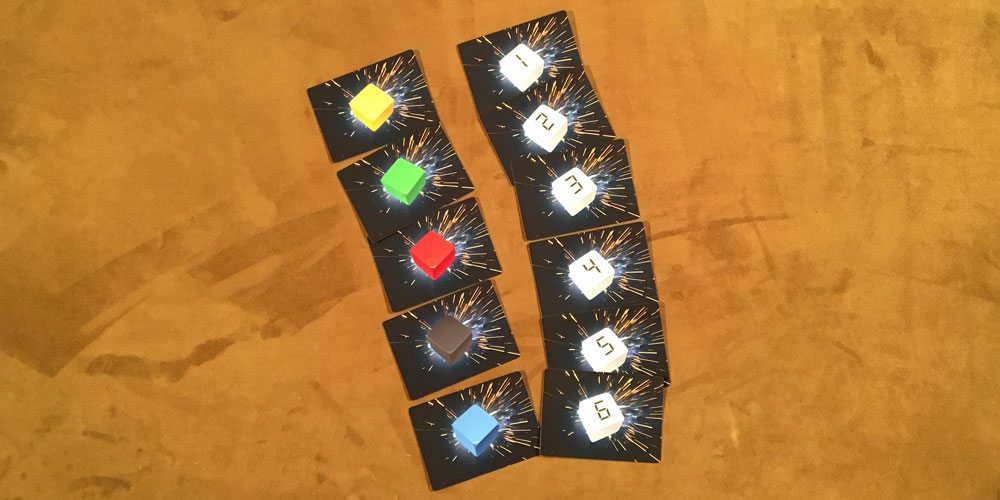
Icons dictate which number or colored die should be placed on the card. Some state subsequent dice should be equal to the previous die, less than, greater than, or entirely different. Some cards demand a mathematic equation be solved with dice. When players fully understand the types of cards and icons, the rules can be explained and the game can start.
As gameplay begins, the first player starts the timer and draws a number of dice equal to the number of players and rolls them. Each player takes a single die that will satisfy a requirement on their Bomb cards. There may be some negotiation, but make it fast, from the very first moments time is running out! (In a solitaire game, the player rolls three dice; in a two-player game, four are rolled and each player takes two.)

If players are unable to legally place one or more dice, those dice are rerolled and players compare the results against the dice on their Bomb cards. If the color or number of the rerolled die (dice) matches an exposed die on their cards, the player must remove a corresponding die from their card and return it to the bag. (For example, a yellow 3 could not be used. It is rerolled and the yellow die now shows a 1. If any player shows a 1 or a yellow die on their card, with the exception of a die that has another die stacked on top of it, the yellow OR 1 die is returned to the bag. This is done for each unused die on each turn. Some turns may have several unused dice.)
Once a Bomb card has the dice on it to satisfy its requirements, it is considered defused. Dice are immediately returned to the bag, the card is turned over, and the player selects one of the five, face-up community Bomb cards to place in front of them. A new card is drawn from the deck so that the community cards always show five available Bomb cards.
If the newly revealed card from the deck is a Fuse card, it must be resolved before drawing more dice. (Act quickly!!) Fuse cards show either a single color or number. All players must look at the dice on their cards. If they have a die of that color or number, it must be returned to the bag. The Fuse card is flipped and another card is drawn from the deck. Hopefully, it’s not another Fuse card.
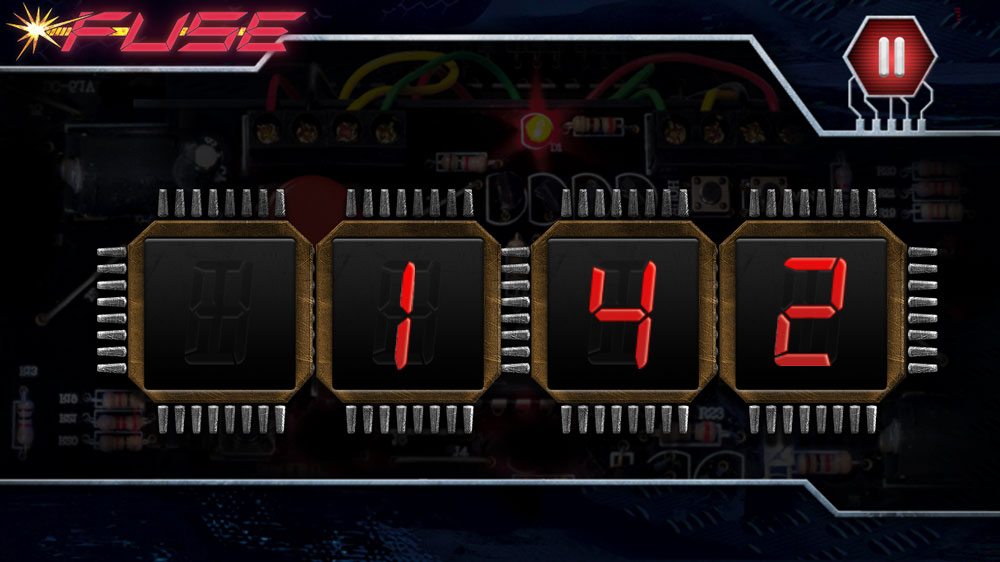
Gameplay continues until one of two states is true: the deck is depleted and all community cards are removed from the center of the table (you needn’t solve the cards in front of players at this point, they are considered duds) or the timer runs out and the ship explodes. There are a number of other setups and rules, but that’s the gist of it. There is a point system for scoring your session, but after the absolute craziness of trying to defuse all the bombs, sometimes just winning is enough.
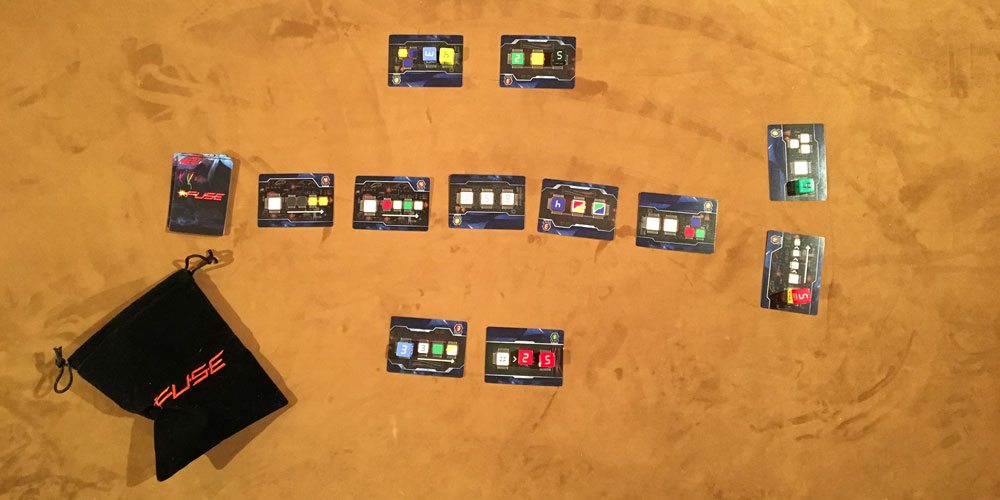
Verdict
Fuse is a game I found at the Renegade Games booth at Gen Con last year. It was one of the most fun and exciting games I played that week, which surprised me because I am not usually a fan of real-time, stress-inducing games. I enjoy playing games to be challenged and to relax. I get enough real-time urgency and stress through my day job.
Yet, there is something incredibly addictive about Fuse. Certainly the camaraderie and teamwork of a cooperative game has something to do with it. The joy of rolling dice probably adds to it too, but there’s something else. Fuse is a game that rewards calmness under pressure, quick thinking, negotiation, and problem solving. In short, skills that are consistent with those required to actually defuse bombs. Perhaps that’s it.
Although I think the artwork on the cards could have been improved to look more like bombs, a move that would have enhanced the theme even more. The Bomb cards look like really dark circuit boards, which makes sense for bombs in space, I guess, but would bombs in space have actual fuses? Makes for a confusing game title, I think. But, no matter. I really enjoy the immersive experience and the pressure of each play of Fuse.
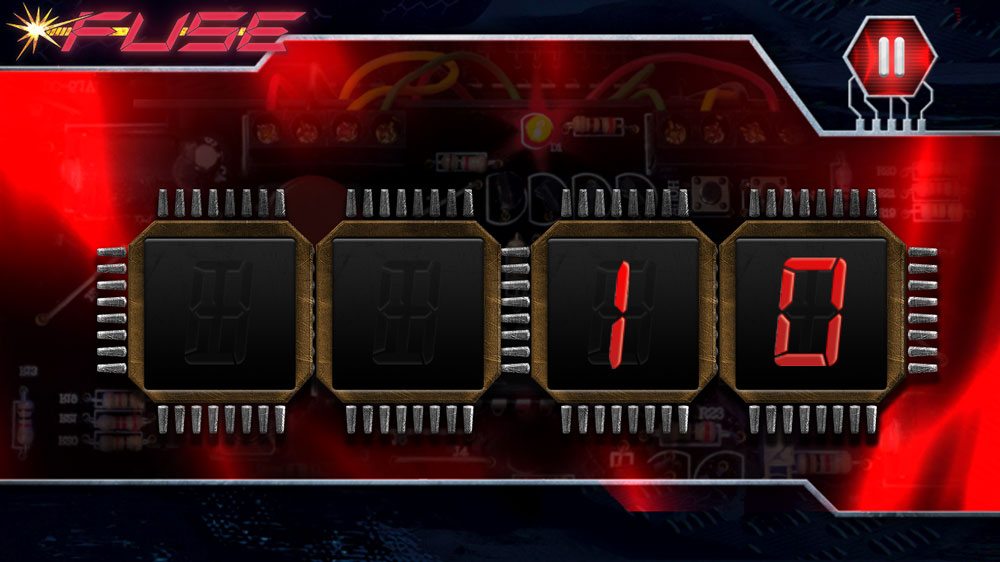
Like when I first played the game at Gen Con, each time I play it, I can’t wait to have another go at Fuse. The game moves so quickly and there are so many cards, no game feels like the one before it. And the difficulty is challenging enough that a victory is never guaranteed. That said, your chances improve the more you play with a group. As players become more familiar with cards, strategies start to develop – especially when picking replacement cards. It makes sense to have a card that’s a little tougher and one on the easier end of the scale. That way, you can always find a die that works on your cards.
And you’ll want to play it over and over again — it’s just that fun — and since no game goes longer than 10 minutes, you can get quite a few games played in a short time. However, that time will slip by because when you get going, gameplay is hectic and frantic. Seconds do count and the app will remind you of your progress as minutes tick off. What’s more, the app announces atmospheric dialogue that helps set the stage for your impending doom.
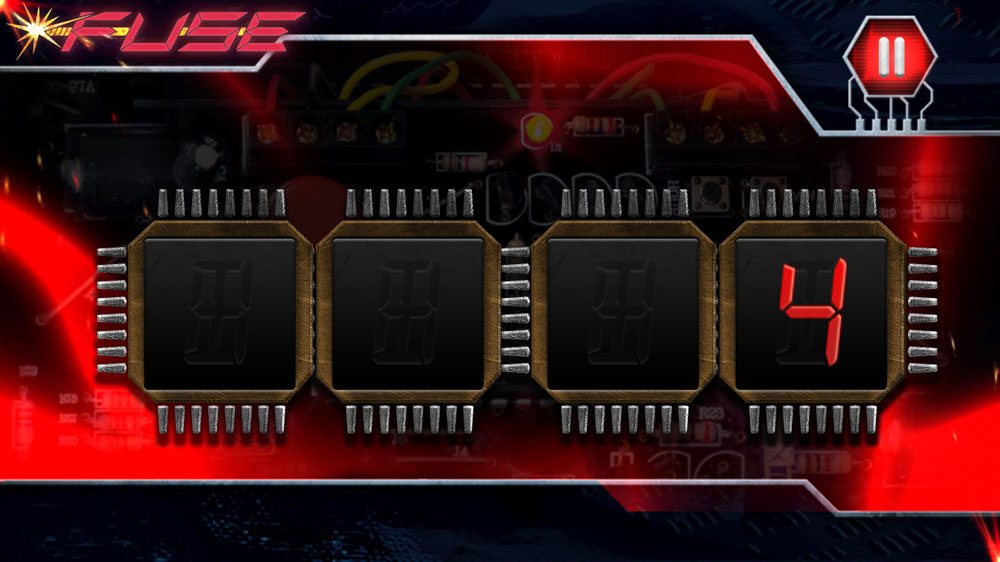
Every time that dice are rolled, the table takes on the feverish and frenzied wrangling of a stock market pit. Players clamor for dice, calling for numbers or colors, while trying to defuse bombs and leaving no die unused. This disorderly diplomacy is part of Fuse‘s appeal — gameplay moves so fast and there are so many demands and so few resources that the problem of co-op quarterbacking is almost eliminated.
It’s all very enjoyable, but I do wish the cards were a little bit thicker. As you frantically flip them and grab new ones, they are likely to be abused, resulting in some folds and bends. What’s more, when you play Fuse, I can’t recommend playing on a felt surface enough. Time is of the essence and getting the dice to rest as quickly as possible is important. You don’t want to be waiting while dice dance on the hard surface of a table or, worse, fall off.
It’s imperative that those dice stay on the table, because, as you play, you will be aware of the economy of milliseconds. You will urge players to take the dice bag now, rather than wait for it to be passed. Your teammates will urge others to move on, not to wait while a replacement card is chosen. And, above all else, everyone will be urging everyone else to “hurry up!” But, lest you think it otherwise, it’s all very fun and enjoyable. Having played the game dozens of times, negotiations have never turned angry and, win or lose, we all have a great time.
Fuse is a fantastically fun game that might fly under your radar because it’s from a smaller publisher, but it’s an outstanding game with a lot of replayability and one you should definitely check out. Just hurry … time is always running out!

Disclosure: GeekDad was sent a sample of this game for review purposes.

